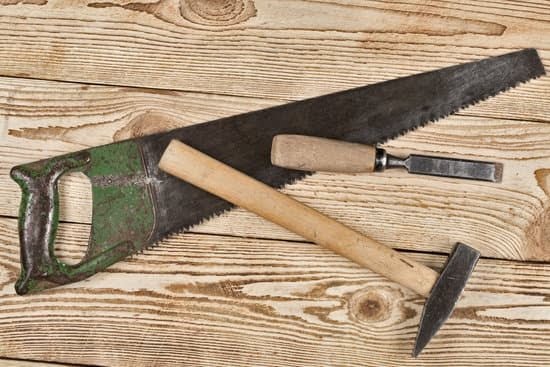Introduction
Cleaning woodwork with vinegar is an effective and eco-friendly way to keep your furniture and cabinets looking their best. Vinegar is a great natural alternative to stronger chemical cleaners, which can harm the environment. Additionally, using vinegar for cleaning eliminates any worry about leaving behind dangerous fumes or residue that could be harmful to pets or children.
To get started, you’ll need white vinegar, an old rag, a soft-bristled brush, warm water, and olive oil. Before you mix the ingredients together, start off by wiping down the wood surface with an old cloth dampened in vinegar. The acidity in the vinegar will break down dirt and grime that can accumulate over time. Afterwards, take the brush dipped in warm water mixed with olive oil and scrub it across the wood surface in a circular motion to remove any stubborn spots of dirt that were missed by the rag and vinegar. After this part of the cleaning process has been completed, use a clean cloth to dry off the wood surface as much as possible. Finally, if desired, you can also apply either boiled linseed oil or mineral oil depending on what type of finish was used originally on your wooden products.
Preparing Your Woodwork for Cleaning
Before starting to clean woodwork with vinegar, it is important to prepare the surface. Start by dusting all the woodwork with a dry cloth or duster to remove any loose debris. Next, if necessary, use a damp cloth to remove any more dirt or grime that has built up over time. Depending on how much buildup you have, you may need a soft-bristled brush or toothbrush and a cleaning solution to help remove tough stains. Once the dirt and grime have been removed, let the area dry completely before moving on to cleaning with vinegar.
When using vinegar for cleaning woodwork, it is important to create the right solution depending on how soiled and stained your area is. For light cleaning, a solution of one part white vinegar and four parts warm water should suffice; while tougher stains may require a stronger mixture such as one part white vinegar and two parts warm water instead. It is important not too use too strong of a solution as this can damage your woodwork over time. Apply the solution liberally onto the surface using either a spray bottle or cloth, being careful not to saturate it too much so as not to leave residual liquid behind when finished. Let the solution sit for five minutes before scrubbing gently in small circular motions with either an old toothbrush or microfiber cloth; both are gentle enough for wood surfaces but tough enough to do their job effectively! After scrubbing thoroughly, wipe off any excess liquid with another clean cloth before allowing it to air dry completely afterwards.
The step-by-step Process for Cleaning Woodwork with Vinegar
1. Begin by vacuuming the woodwork to remove any dust, dirt, and cobwebs.
2. To create a cleaning solution mix one part white vinegar with one part warm water in a bucket. Put on protective gloves and use a soft cloth to apply the solution to your wood surfaces.
3. Gently scrub into the surface of the woodworking, focusing on areas with grime build-up or sticky residue. You can also use a toothbrush or an old toothbrush to scrub away stubborn dirt in hard-to-reach places such as bevels or carvings.
4. After scrubbing your woodwork down with the vinegar solution, rinse with clean water using another damp cloth before wiping dry with some absorbent towels (like microfiber).
5. For added shine, finish off by buffing with an old clean sock or polishing cloth until all moisture is removed from the surface of the woodwork and it appears beautiful again!
Correctly Sealing Your Woodwork After Cleaning
When cleaning woodwork with vinegar, it is important to correctly seal your woodwork after you finish cleaning. This will not only help preserve the original look and feel of your wood items but also help prevent water damage and staining from occurring. To create the best seal for your woodworking, start by sanding down any areas that may have debris or dirt stuck in them. Next, use an oil-based stain or primer to cover the area you had just sanded as well as any damage caused by the vinegar during cleaning. Finally, apply a top coat of lacquer or varnish to provide a waterproof protective layer against further moisture damage while also adding a beautiful finish to your woodwork. Following these steps will ensure that your clean wood looks great and remains protected for years to come.
Alternatives to Cleaning Woodwork with Vinegar
An alternative to using vinegar to clean woodwork is baking soda. Baking soda is a natural cleaning agent that can be used on finished and unfinished wooden surfaces. To use baking soda, mix two tablespoons of baking soda with one quart of warm water in a bucket or spray bottle. Apply the mixture to the wood with a damp cloth, scrubbing if necessary, then wipe away any excess with a dry cloth.
Another option to clean woodwork is to combine equal parts lemon juice and olive oil in a spray bottle. Spray the solution onto your wood surfaces and then use a lint-free cloth to polish it away. This method works particularly well on lighter woods such as maple and pine.
One more way to clean woodwork is with mineral spirits or rubbing alcohol. Both can safely be used on finished woods including teak, oak, mahogany, and bamboo. Fill a spray bottle with either mineral spirits or rubbing alcohol; dampen a microfiber rag or pad with the liquid, then thoroughly scrub down all surfaces of the woodwork, paying special attention to stubborn spots like crevices and doorframes. Afterwards, wipe away any excess residue from the surface and buff out any remaining moisture until you get your desired shine.
Troubleshooting Tips When Cleaning Woodwork with Vinegar
1. Test a small, inconspicuous area before cleaning larger areas with vinegar – Dealing with wood can be tricky, and different types of wood may react differently when using vinegar as a cleaning solution. It is important to test a small, inconspicuous area of the wood before applying the vinegar to a larger area. This allows you to see how well the vinegar will clean the surface and also gives you time to adjust your strategy if there are any unexpected results.
2. Use a dilute solution of vinegar for delicate surfaces – If you are dealing with more delicate surfaces, it is important not to use undiluted vinegar as this could damage or discolor the varnish on certain pieces. Diluting one part white distilled vinegar with one part water is usually fine for standard cleaning tasks, but double-check with other sources if the wood in question is particularly old or valuable.
3. Rinse immediately after cleaning – Once you have finished cleaning an area, it is important to rinse immediately with clean water. Leaving residue behind can cause streaking and damaging effects that could make it more difficult to bring out its natural beauty again later on. For best results, it’s recommended that you dry off any excess water right away using a soft cloth or dryer sheet for even better results.
Conclusion
Cleaning woodwork with vinegar is an effective, natural cleaning technique. Vinegar can help cut through dirt and grime while leaving a streak-free shine on wooden surfaces. It is also a good idea to protect the wood by giving it a coat of wax or varnish once clean. When using vinegar for cleaning, the best option is white distilled vinegar which has a balance between acidic pH level and acidity – this means that more effectively remove dirt, grime and grease build up without damaging the wood. However, it’s important to test any product on a small patch of wood before applying it over the whole surface as some products may react differently on different types of wood. Furthermore, always wear protective gloves when cleaning with vinegar to prevent skin irritation or burns from contact with undiluted vinegar. Finally, make sure to properly ventilate the area since fumes from undiluted vinegar may cause irritation if breathed in for long periods of time. With the proper precautions taken and after following the guidelines for safe cleaning practices with vinegar, you will be able to keep your woodwork looking great and protected from damage.

Hi everyone! I’m a woodworker and blogger, and this is my woodworking blog. In my blog, I share tips and tricks for woodworkers of all skill levels, as well as project ideas that you can try yourself.





